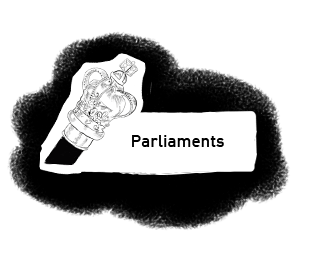
KS3 > The Reformation > Constituencies > Lancashire
Lancashire was a thinly-populated county in the Tudor period. It was often considered to be ‘remote’ from London. The largest industry was agriculture, but there was also some coal mining in the county.
There were a few large monasteries that were sold to local landowners during the dissolution. Most of the MPs lived in the county, and the majority remained Catholic.
Under Elizabeth’s reign many Catholics decided to outwardly conform to the Protestant Church at first. They attended church services but still held their own private beliefs. As time went on this became more difficult – especially after Elizabeth was excommunicated by the Pope and Catholics came under greater suspicion. The Catholic MPs of Lancashire faced a stark choice. If they did not at least outwardly conform to the Church of England they faced losing their position, being fined and later even imprisonment. From 1563 Catholics could not sit in Parliament and from 1570 they risked losing their jobs in local government as well.
The Lancashire MPs dealt with this in different ways. Sir Thomas Gerard, for example, was implicated in a plot surrounding Mary, Queen of Scots and imprisoned in the Tower of London. By November 1594 he made a ‘show of conforming’, however, and received a pardon. Another Lancashire MP, Sir John Southworth, was also imprisoned for involvement in a rebellion. It was also reported that he, his family and servants celebrated Catholic religious services in his house. Again, he later appeared to conform and contributed money to the fund raised to fight the Spanish Armada. After this, however, he was arrested for holding Catholic writings and images.
 |
| Priest's hone in Boscobel House, Shropshire © Aeropigitca |
Many women were reported for their Catholic beliefs. They were often responsible for bringing up their children as Catholics whilst their husbands outwardly conformed to protect their wealth and position. Again, this was the case in Lancashire. For example, Sir John Atherton conformed but his wife was repeatedly in trouble after his death for Catholicism. Richard Bold’s wife was a known Catholic, and in 1582 a servant reported that they were hiding a Catholic priest in their house. Sir Gilbert Gerard was said to be ‘a protestant at London and a papist in Lancashire’, and both his wife and daughters were listed as Catholics.

Harley 6159 ff. 3v-4 (The map of Lancashire dated and signed by William Smith, 1598)
© The British Library (Illuminated manuscripts)
Lancashire
County in England
Parliamentary Constituency since 1386
During the 1570s missionary Catholic priests arrived in England. The government were extremely concerned by these men because of their involvement in plots against Elizabeth. Wealthy Catholics would often hide priests in their house to worship privately. There was a network of ‘safe houses’ for these priests, which often included a ‘priest hole’ – a secret chamber for the priest to hide.







